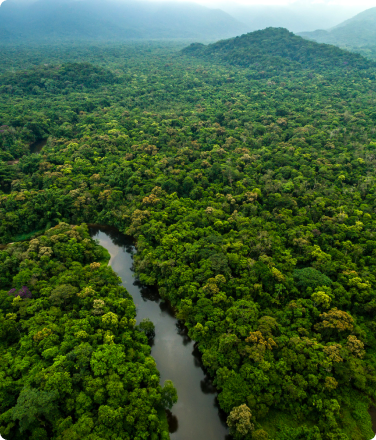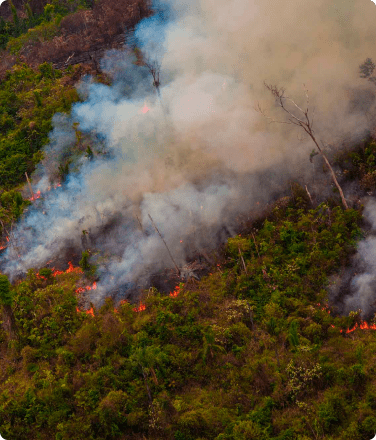By Daniela Arias
- Traditional basket weaving using chunga palm leaves has been a source of income for Indigenous women from the Emberá Wounaan Comarca in Panama’s Darién region, but it’s become increasingly difficult to source the natural materials.
- The Embera Wounaan Comarca is implementing a REDD+ project to strengthen sustainable forest management and curb deforestation by promoting traditional practices like basket weaving and culture-based economies.
- One of the greatest challenges of REDD+ projects is ensuring that safeguards are effectively upheld—especially the right to Free, Prior, and Informed Consent (FPIC)—to secure inclusive participation and equitable access to benefits.
Yareliz Castillo displays two of her handcrafted pieces she wove using chunga palm leaves: a vibrant mandala and another featuring a turtle at its center. Her hands weave the forest with leaf fibers, using ancestral knowledge she acquired after adopting Emberá culture at the age of 14, when she married a man from this Indigenous people. She left behind her life along the Pan-American Highway to build a new one in the Emberá Wounaan Comarca (Comarca is one of the terms used in Panama to refer to a collective territory). “It’s a peaceful community, with forests and open air,” she says in a calm tone, her gaze both cheerful and shy, as her youngest son, one of nine siblings, stands by her side.
The chunga palm, known as jiwa in the Emberá dialect, is an imposing species that reaches between 49-66 feet tall. Its trunk is armored with sharp black spines resembling porcupine quills, some reaching up to 8 inches in length. When touched, they crack and feel as rough as straw.
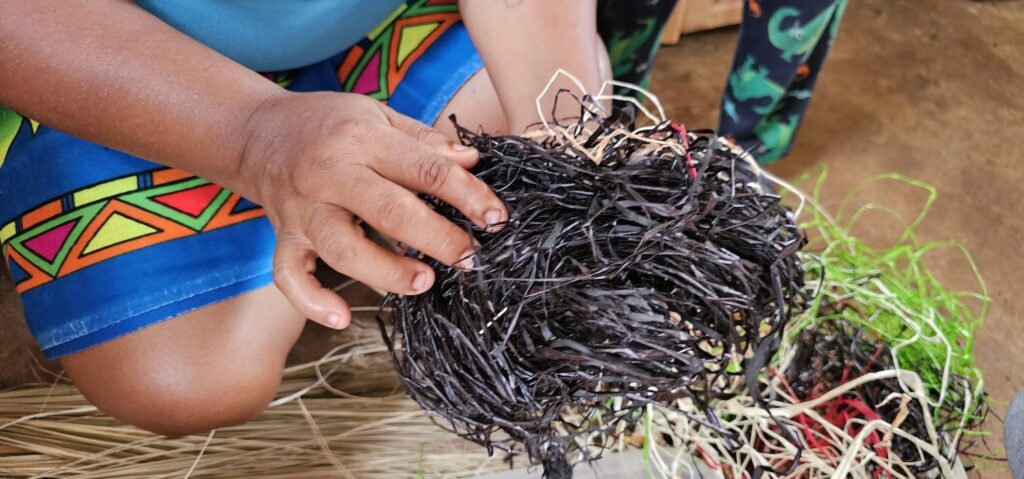
To obtain the fibers, chunga leaves must be torn from the base. These leaves are then taken home, where the fibers are dyed using natural colors: red from achiote seeds, yellow from turmeric, and black from cocobolo wood mixed with dark soil. Each fiber is boiled for about two hours, then left to dry in the sun for a week. Once dried, the fibers are woven into handcrafted pieces. Most women in the community make necklaces and baskets from chunga fiber. Weaving a single basket can take between three and six full days of work.
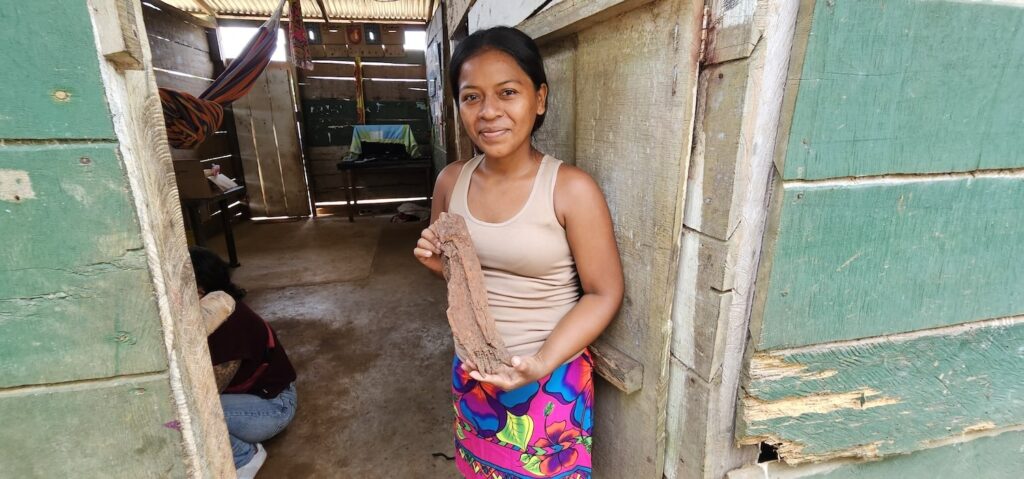
Yareliz loves her life in the Alto Playón community, part of the Emberá Wounaan Comarca. She treasures the Emberá dialect, the paruma (her traditional dress), cultivating the land, and the ancestral crafts she now teaches her daughter, Yeritzela. But sourcing the natural materials for her crafts has become increasingly difficult: the leaves she uses come from a palm that must be felled for harvesting, and it takes a decade to grow back. This not only restricts access to the resource, but also threatens its long-term sustainability.
From the Chunga Nursery to REDD+: The Path Toward Sustainable Livelihoods
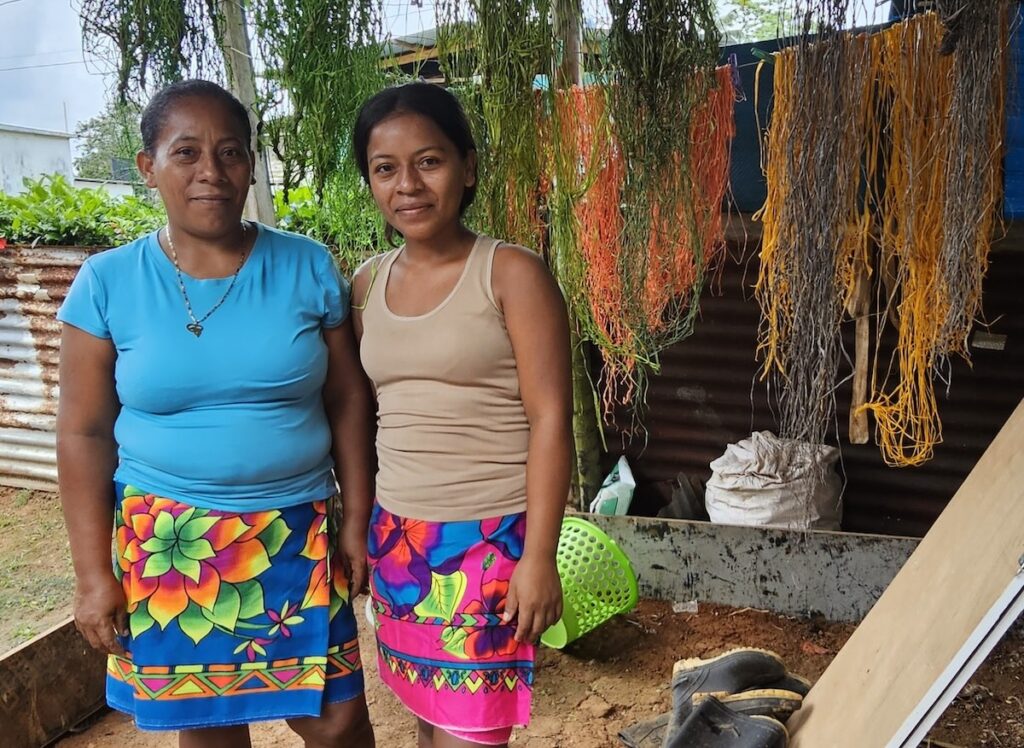
Yareliz recalls a government project from years ago that paid community members to establish chunga nurseries, in an effort to promote more sustainable, forest-based livelihoods. “They paid community members to clear the land and plant the chunga seedlings. I don’t know how it is now because the project has already ended. When there’s no support, we take turns caring for it, but it’s hard to maintain without any compensation for our work,” she says.
Although the initiative helped strengthen women’s livelihoods and support their families, it was a short-term project carried out in a very different context. At the time, migrants were crossing the Darién Gap—a treacherous 60-mile stretch of dense rainforest, rugged mountains, and vast swamplands that forms the only land bridge between South and Central America. These migrants on their way to North America often sought help from local communities and temporarily integrated into the local economy—creating new demand for food, transport, and services. But with stricter migration policies in both Panama and the US, that flow has drastically declined. The community has since returned to its longstanding reality of government neglect and marginalization. All that remains from that brief period are abandoned clothes in the forest, empty shelters, and the sound of the rivers—silent witnesses to the passage.
In response to these challenges, hope for improving their quality of life lies in the Emberá Wounaan REDD+ project, launched by the Comarca in 2018 through a partnership with B-terra Corp and CO2CERO SAS. REDD+ projects—Reducing Emissions from Deforestation and Forest Degradation—aim to conserve and increase forest carbon stocks (carbon captured from the atmosphere by trees and stored in their trunks, branches, and roots) through sustainable practices. By selling certified emission reductions, also known as carbon credits, in the international voluntary carbon market, these initiatives can create new income streams for forest-dependent communities.
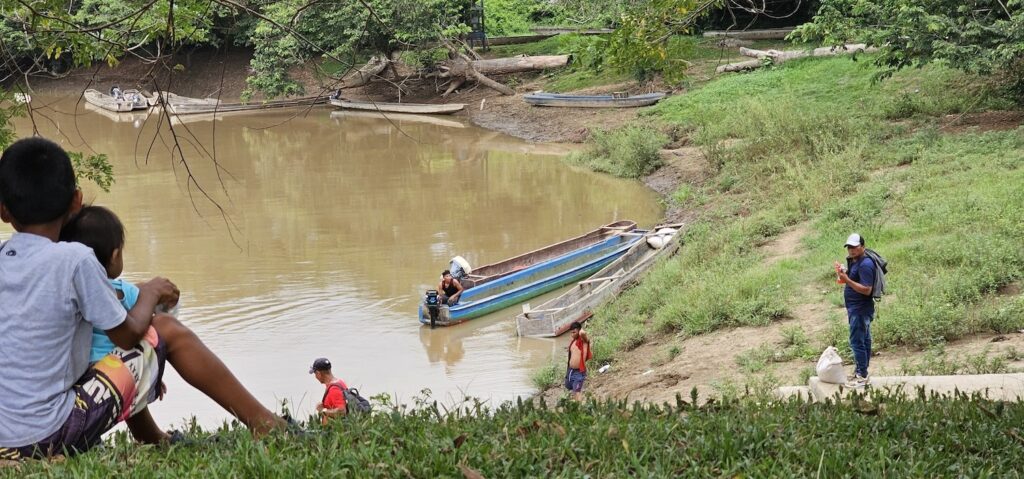
The Comarca’s project spans over one million acres—slightly larger than the state of Rhode Island. This land makes up their collective territory and supports a population of more than 10,000 Emberá Wounaan people.

Access and Equitable Distribution of Benefits
To uphold their integrity and deliver meaningful benefits, REDD+ initiatives must adhere to internationally recognized social and environmental safeguards. This includes guaranteeing communities’ rights to equitable benefit sharing and to full, effective participation in all decision-making processes. These commitments must align with the principles of Free, Prior, and Informed Consent (FPIC) and apply to the entire community.
One of the key motivations for the Emberá Wounaan Comarca to engage in REDD+ is the opportunity to actively involve its people in forest protection. The income from carbon credit sales can be reinvested in culturally rooted sustainable forest management, while also creating much-needed employment and expanding educational opportunities.
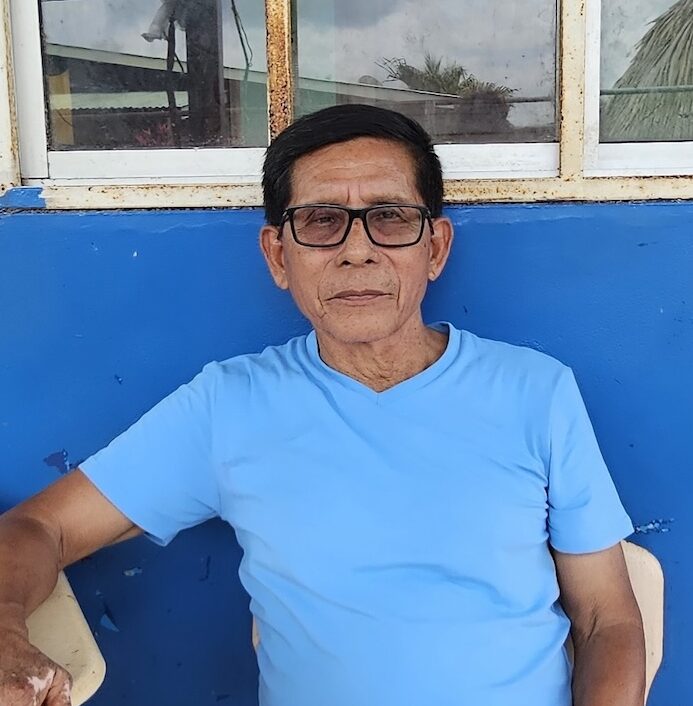
If this project is successful and we manage to generate our own economic resources, we have a strong commitment to achieving our goals. Our first objective is to strengthen our culture and language, which are essential. That’s why we’re thinking about creating a special educational center to preserve our knowledge, our dances, our cuisine, and our way of life.
– Leonides Cunampia, General Chief of the Emberá Wounaan Comarca
To secure the benefits of the project, the Comarca negotiated to receive 56% of the revenue from carbon credit sales. It also established a tripartite governance structure to ensure transparency and accountability in managing these funds. This structure consists of an administrator, an accountant, and the traditional leaders (Nokos), who serve as observers and payment supervisors. Each community will maintain its own bank account and allocate resources based on its priorities—such as governance, education, and more. Similarly, carbon credit sales must be approved by a commission in which communities, or their elected representatives, are responsible for signing off on each transaction. This process ensures full transparency and traceability every step of the way.
Full and Effective Participation
Although REDD+ social and environmental safeguards were designed to reduce risks and protect Indigenous peoples’ rights, companies often fall short in applying them effectively. These projects are inherently complex and frequently involve major gaps in language, knowledge, and information management, limiting communities’ ability to fully engage in negotiations, consultations, or contract processes.
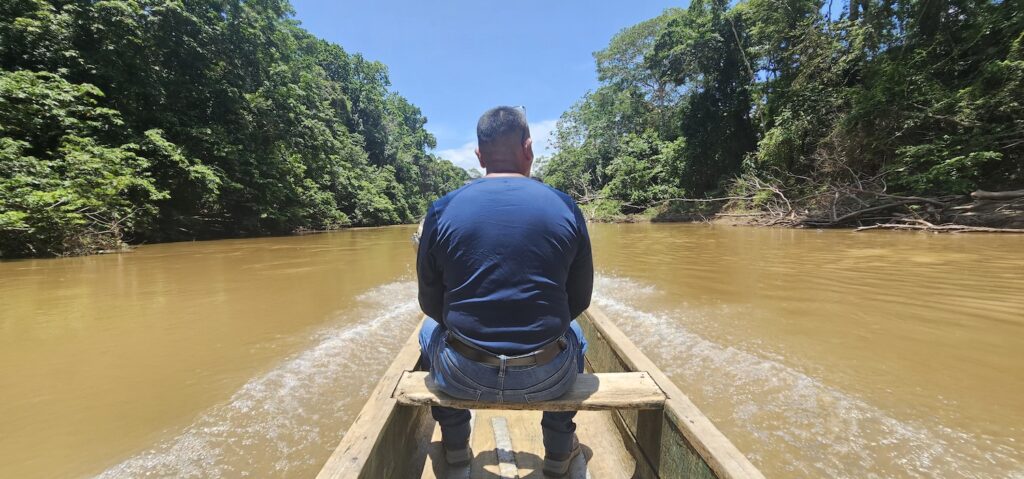
If we bring information straight from an office down here, it’s hard to understand. I understand, but my fellow community members won’t. That’s why we say all projects must start from the community and then go to the office—because we are the ones who know the reality, how our people live. Outsiders can do research, but if they don’t come to the field, they won’t understand how we live.
– Enrique Chango, advisor to leaders and Nokos of the Lajas Blancas community in the Emberá Wounaan Comarca
To ensure communities can participate fully and effectively in project negotiations, companies must engage directly with Indigenous communities from the start. They must meet on Indigenous territory, and include all traditional authorities in REDD+ trainings, including women and youth, not just elected leaders. This approach helps guarantee that the entire community understands the project’s implications and is actively involved in its design and negotiation before any contracts are signed. According to the project registration documents, B-terra Corp applied an early engagement approach in the Comarca. Multiple community meetings were held to share information, foster dialogue, and build consensus around the project. Ultimately, the Comarca, through its leaders, provided their endorsement and consent to move forward.
While consultation and Free, Prior, and Informed Consent (FPIC) through local governance structures are essential, they alone do not ensure full and effective participation from the entire community throughout every stage of a project. This challenge is currently evident in both B-terra Corp and the Emberá Wounaan Comarca. While Enrique had some familiarity with the process, Yareliz did not—and several leaders and women interviewed lacked clear information about the project or its potential benefits, despite it already being in the initial verification phase. This has caused confusion and division within the communities. For REDD+ projects to succeed, consultation and FPIC processes must be inclusive and reflect the voices of the entire community, including individuals like Yareliz and youth like Yeritzela, so that these initiatives truly serve everyone’s needs and aspirations.
Boosting a Way of Life Based on Well-being
Rainforest Foundation US (RFUS) has supported its partners—including the Mesoamerican Alliance of Peoples and Forests (AMPB), of which the Emberá Wounaan Comarca is a member—by providing impartial information, guidance, and resources to help them engage in forest carbon markets while safeguarding their rights and honoring their self-determined visions for the future. In April, RFUS partnered with AMPB to strengthen the Comarca’s regional leadership, aiming to ensure their effective participation in the REDD+ project and to align its implementation with the community’s priorities and aspirations.

The greatest challenge is ensuring that carbon credits do not become a new form of exploitation for Indigenous peoples, but instead genuinely support their well-being. REDD+ projects must be rooted in ancestral knowledge systems and the traditional ways of life that sustain these communities. Crafts, food cultivation, hunting, fishing, and the transmission of language and culture are essential pillars of their livelihoods.
For Yareliz, who says there are currently no jobs or opportunities for her children, the chance to sell her crafts is vital. With the resources generated by the project, the community can strengthen the entire chunga palm value chain—from sustainable cultivation to the creation and sale of artisan goods—while also promoting tourism that respects their culture.
Currently, Yareliz and her family rely on their small crops of yam, corn, rice, and cassava, harvests that are just enough to meet their basic needs. “A project like this can really help, because there will be work and people will earn enough to send their children to school and ensure they have enough to eat, because things are hard right now,” she says.
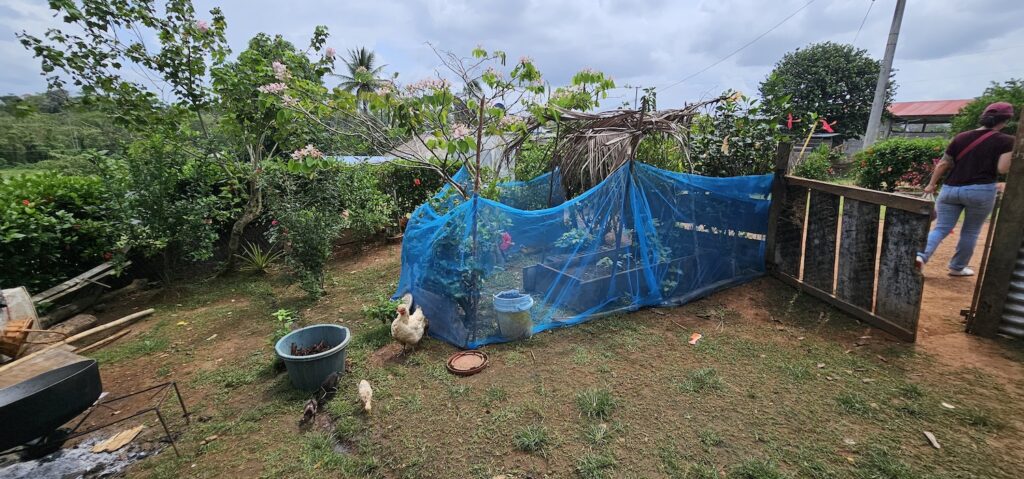
However, they also recognize that preserving their traditions depends on strengthening the community’s connection with the land and fostering a sense of unity and cultural pride. They hope the REDD+ project will support this process—especially by enabling the intergenerational transmission of their ancestral practices.
Yareliz’s hope lies in Yeritzela, who proudly says, “I want to continue sharing my culture through the crafts my mother is teaching me.”


